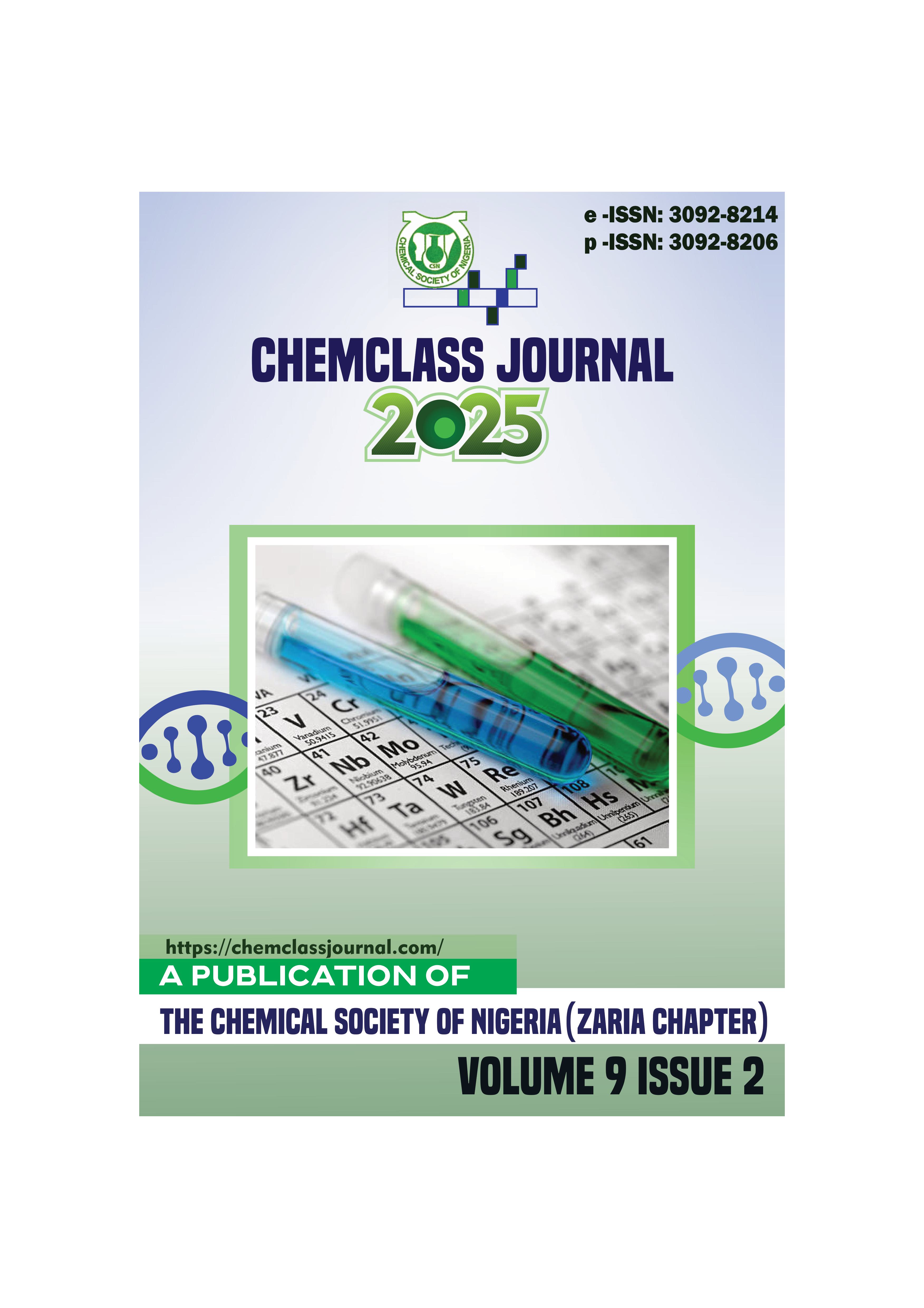Enhanced Phytoremediation of Copper Contaminated Soil Using Plant Growth Regulators (IAA and GA3) with Helianthus annus
DOI:
https://doi.org/10.33003/chemclass-2025-0901/147Keywords:
Bioaccumulation factor, Heavy metals , Nonbiodegradable , Phytoremediation , Translocation factor, Enrichment factorAbstract
Human anthropogenic activities, such as industrialization and urbanization has led to the introduction of
heavy metals (HMs) into the ecosystem. These HMs are nonbiodegradable which lead to their
bioaccumulation and biomagnification within the food chain. They are considered toxic when they exceed
their threshold limit which is peculiar to each element. Most methods used to get rid of these inorganic
pollutants tend to be harsh and expensive, an environmentally-friendly and cost-effective alternative is
phytoremediation. Although there are limitations associated with phytoremediation technology which
include slow growth, small biomass and plant low tolerance to stress. These limitations can be minimized
by the use of plant growth regulators (PGRs). This study made use of different concentration (low, medium
and high) of two types of PGRs; indole acetic acid (IAA) and gibberellic acid (GA3) to enhance
phytoremediation of Cu using Helianthus annus (Ha). Concentration of HMs in soil, root and shoot was
determined using Atomic Absorption Spectrophotometer (AAS), the values obtained were used to
determine the phytoremediation efficiency. Significant differences between treatments were identified by
one-way analysis of variance (ANOVA). The highest bioaccumulation factor (BAF) was 3.628 found with
200 mg/L GA3, the most effective translocation factor (TF) was 1.194 with 200 mg/L IAA, while
enrichment factor (EF) had highest value of 1.569 with 200 mg/L GA3. Combination of IAA and GA3 at
controlled doses might optimize both metal uptake and translocation at the same time. Field trials should
validate laboratory findings for large-scale application; this can serve as a long term and eco-friendly
remedy to HMs polluted farmlands.





 ChemClass Journal
ChemClass Journal
